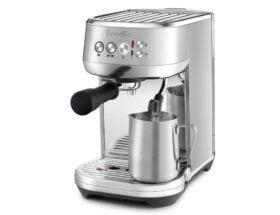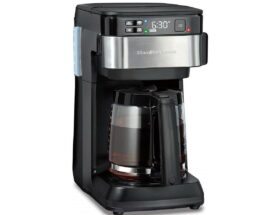
Hot Coffee and Styrofoam Cups: Safety Concerns and Alternatives
Styrofoam cups: light, cheap, and great at trapping heat for your hot drinks. But beware—these cups might not be as harmless as they seem. Recent research indicates that when hot liquids meet Styrofoam, nasty chemicals can seep into your drink, with styrene being a major culprit. This compound, found in the very material of Styrofoam cups, is classified as a potential cancer-causing agent by the International Agency for Research on Cancer. Though one coffee’s worth of styrene might not be a big deal, consistent exposure could spell trouble.
And it’s not just about your health. Styrofoam cups stick around forever, refusing to biodegrade for centuries. They clog up landfills and pollute oceans, putting wildlife and ecosystems at risk.
But fret not! We’ve got better options that won’t mess with your health or the planet. Dive into our blog to discover these eco-friendly alternatives, and find the perfect coffee mug that matches your style and values.
Table of Contents
Hot Coffee and Styrofoam Cups: Safety Concerns and Alternatives
The Safety Concerns of Styrofoam Cups
For many of us, starting the day with a hot cup of coffee is a must. And often, we rely on the convenience of Styrofoam cups when we’re on the go. However, there are growing concerns about the safety of using Styrofoam cups for hot beverages.
Styrofoam cups are made from polystyrene, a plastic material that contains hazardous chemicals like styrene and benzene. When hot liquid is poured into these cups, these chemicals can leach into the coffee, posing potential health risks. Studies have linked styrene exposure to various health problems, including respiratory issues, liver damage, and even an increased risk of certain cancers.
Furthermore, Styrofoam is non-biodegradable, meaning it takes hundreds of years to break down. Every cup we use contributes to the growing waste problem, filling up landfills and harming the environment.
The Environmental Impact of Styrofoam Cups
When it comes to coffee container safety, it’s not just about our health. It’s also about the planet we live on. Styrofoam cups are not eco-friendly, and their production and disposal have significant environmental consequences.
To produce Styrofoam cups, petroleum, a non-renewable resource, is used. The extraction and processing of petroleum contribute to air and water pollution, greenhouse gas emissions, and habitat destruction. Additionally, the manufacturing process itself emits toxic chemicals into the environment.
Once we’re done with our coffee, these cups often end up in landfills, where they take up space and contribute to pollution. Styrofoam does not degrade easily and can persist in the environment for centuries. It can also break into small pieces called microplastics, which are ingested by wildlife and can enter our food chain.
Styrofoam cups have eco-friendly rivals! Some cups are crafted from cornstarch or sugarcane bioplastics. These options are renewable, biodegradable, and let you sip sustainably.
Safer and Eco-Friendly Alternatives
Thankfully, there are plenty of alternatives to Styrofoam cups that are both safer for our health and better for the planet. One popular option is reusable, eco-friendly coffee mugs.
Eco-friendly coffee mugs are typically made from materials like stainless steel, ceramic, glass, or bamboo. These materials are non-toxic and do not leach harmful chemicals into your hot beverages. They are also durable, allowing you to use them for years, reducing waste produced by single-use cups.
When choosing the right coffee mug, consider your lifestyle and preferences. If you’re always on the move, look for insulated stainless steel mugs that can keep your coffee hot for hours. Ceramic or glass mugs are perfect for enjoying your coffee at home, as they provide a more aesthetic experience.
Did you know that Styrofoam cups were first introduced in the 1950s and quickly gained popularity for their lightweight and insulating properties? Unfortunately, this convenience comes at a cost to both our health and the environment.
It’s clear that Styrofoam cups pose safety risks to both our health and the environment. By opting for safer and eco-friendly alternatives, such as reusable coffee mugs, we can enjoy our hot coffee while reducing our impact on the planet. So let’s make the switch and make a positive change, one cup of coffee at a time!
Step-by-Step Guide: Choosing Safe and Eco-Friendly Alternatives to Styrofoam Cups for Hot Coffee
Step 1: Educate Yourself on the Risks of Styrofoam Cups
Before making the switch to a safer alternative, it’s important to understand the potential health and environmental risks associated with Styrofoam cups. Styrofoam is a type of plastic made from polystyrene, a material that can leach harmful chemicals into hot liquids like coffee. These chemicals, including styrene, have been linked to adverse health effects and may contaminate our food and water sources. Additionally, Styrofoam is non-biodegradable and can persist in the environment for hundreds of years, contributing to pollution and harming wildlife.
Step 2: Explore Eco-Friendly Coffee Mug Options
Luckily, there are plenty of alternatives to Styrofoam cups that are both safe for hot beverages and better for the environment. Here are a few options to consider:
- 1. Ceramic or Porcelain Mugs: These classic mugs are a popular choice for coffee lovers. They are durable, easy to clean, and do not pose any health risks. Look for mugs that are lead-free and microwave-safe.
- 2. Glass Cups: Glass cups are another safe option for hot coffee. They are non-reactive and do not release any harmful chemicals. Plus, they allow you to enjoy the rich, vibrant colors of your coffee.
- 3. Stainless Steel Travel Mugs: If you’re always on the go, a stainless steel travel mug is a great choice. These mugs are sturdy, insulated, and keep your coffee hot for hours. Make sure to pick a BPA-free option.
- 4. Bamboo or Silicone Cups: For those looking for a more lightweight and portable option, bamboo or silicone cups are worth considering. These materials are eco-friendly, renewable, and can be folded or collapsed for easy storage.
Step 3: Consider Your Lifestyle and Preferences
When choosing the right coffee mug, it’s important to consider your own lifestyle and preferences. Here are a few things to keep in mind:
- 1. Size: Determine the ideal capacity for your daily coffee needs. Whether you prefer a small 8-ounce cup or a larger 16-ounce mug, choose the size that suits you best.
- 2. Insulation: If you like your coffee to stay piping hot for longer periods, opt for an insulated mug or a thermal travel cup.
- 3. Design and Grip: Look for a mug that fits comfortably in your hand and has a design that resonates with your personal style.
- 4. Cleaning and Maintenance: Consider the ease of cleaning your chosen coffee mug. Some materials and designs may require more effort than others.
Step 4: Make the Switch and Spread the Word!
Now that you’ve chosen a safer and eco-friendly alternative to Styrofoam cups, it’s time to put it into action. Start using your new coffee mug and encourage others to do the same. By making a small change in your daily routine, you can contribute to a healthier and greener world.
Remember, by choosing to avoid Styrofoam cups, you are prioritizing your health and the environment. Let’s sip our hot coffee guilt-free and create a positive impact one cup at a time!
Wrap Up
In conclusion, the use of Styrofoam cups for hot coffee raises valid safety concerns for both our health and the environment. The potential risks from chemicals leaching into the coffee, as well as the negative impact on our planet, make it essential to explore safer and more sustainable alternatives.
Thankfully, there are plenty of eco-friendly options available when it comes to choosing the right coffee mug. From insulated stainless steel mugs to glass or ceramic cups, you can enjoy your hot coffee without compromising your health or the environment. By investing in a reusable coffee mug, you can significantly reduce your contribution to waste and be part of the solution.
Remember, the choices we make as consumers have a real impact on the world around us. By opting for reusable and sustainable alternatives to Styrofoam cups, we can all contribute to a healthier planet.
We hope this blog post has provided valuable insights and information on the topic of hot coffee and Styrofoam cups. Now, it’s over to you! We’d love to hear your thoughts and experiences. Have you switched to a more eco-friendly coffee mug? What other sustainable choices have you made in your everyday life? Leave a comment below and let’s continue the conversation!
And if you’re interested in exploring more coffee-related content, be sure to check out our other articles:
- How to Vietnamese Coffee: The Strong & Bold Coffee
- How to Hario V60: The Ultimate Guide to Making Perfect Coffee
- How to Siphon Coffee: The Slow and Elegant Way to Brew a Perfect Cup
- How to Aeropress: The Ultimate Guide to Making Amazing Coffee at Home
Thank you for joining us on this journey towards a safer and more sustainable coffee-drinking experience. Together, we can make a difference!










I am definitely bookmarking this website and sharing it with my acquaintances. You will be getting plenty of visitors to your website from me!